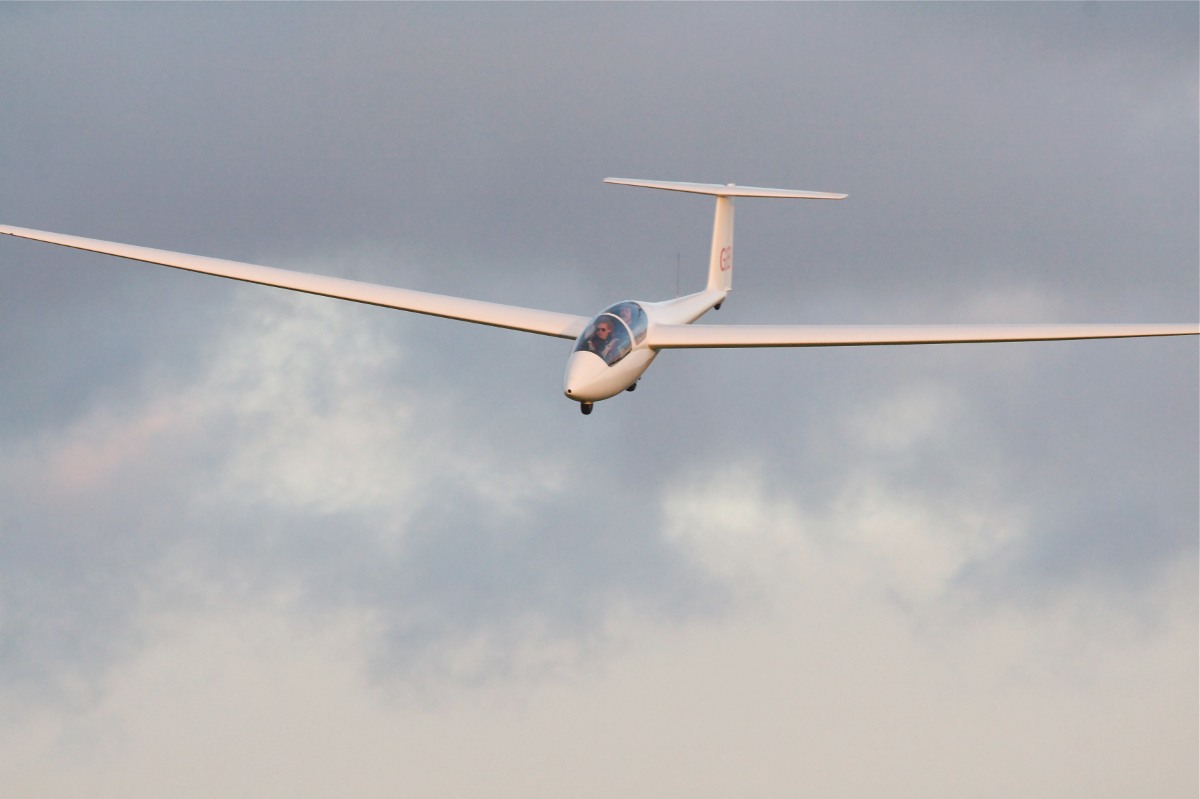


Gliding is flying a plane without an engine - soaring for hours on end, using nothing but the power of the air. This is the closest you will get to being a bird.
It can be as peaceful or exciting as you want it to be - float silently over the beautiful Scottish countryside, admiring the view of Edinburgh one way and the Highlands the other, or turn the your whole world upside down by doing aerobatics!
After the initial challenge of learning to fly, you will learn to soar invisible currents of rising air to great heights and travel hundreds of miles around the country. These rising air currents are known as "lift" and are what make gliding so fascinating.
Although gliders are very efficient, they will eventually sink back to Earth. However, if a glider is flown in lift where the air is going up faster than the glider is going down, it can stay airborne indefinitely.
When air blows against a slope, it is pushed upwards. A glider can therefore stay airborne for as long as the wind blows by flying along the edge of the hill. We fly at Portmoak which has 2 hills nearby. This means that your first flight will normally involve hill soaring.
When the sun shines on the ground, some parts will warm up more than others. This means that bubbles of air called thermals will rise from the warmer parts. Gliders can fly great distances by circling in a thermal to gain height and then gliding to the next one. Many birds (especially predatory birds) use thermals to stay in the air. This is why they are often seen flying round and round without flapping. Thermals are often marked on suitable days by a fluffy cloud with a relatively flat bottom. These are known as Cumulus clouds and can even form long "streets" which allow the glider to fly long distances without having to turn while climbing and therefore fly very fast.
When the air blows over hills such as those in the highlands it rises to get over the hills and then sinks down the other side. Under certain conditions, this wave-like motion continues for hundreds of miles downwind of the hill and to heights which are many times greater than that of the original hill. By flying in the upward part of the wave, gliders can climb to over 40,000 feet. Often the air is so smooth that the glider will fly itself and you can just sit there laughing, watching the ground and even the clouds fall away from you. Wave lift is very common in Scotland during the winter months - make sure you experience it during your time at Edinburgh.
No doubt the above will have persuaded you to take a trial lesson. If you still need more inspiration, have a look at our photo album.
Don't miss this golden opportunity!